Expression in Math
In mathematics, an expression is a combination of numbers, symbols, and operators (such as +, -, ×, ÷) that represents a value. It can include variables, constants, and mathematical operations. Expressions can be simple or complex, and they are used to represent a wide range of mathematical ideas and problems.
Types of Expressions
There are several types of expressions in mathematics:
- Numerical Expressions: These are expressions that involve only numbers and operations. For example, 5 + 3 or 12 ÷ 4.
- Variable Expressions: These expressions contain variables, which are symbols that represent unknown or changing values. For example, 3x + 7 or 2y - 5.
- Algebraic Expressions: These expressions combine numbers, variables, and operations. For example, 4x + 2y or 3(x + 5).
- Literal Expressions: These are expressions with letters that represent certain quantities. For example, the formula for the area of a rectangle, A = l × w, is a literal expression.
Study Guide
To understand and work with expressions effectively, it's important to grasp the following concepts:
- Understanding the basic operations: addition, subtraction, multiplication, and division.
- Recognizing the parts of an expression: constants, variables, and operators.
- Learning the rules for combining like terms and simplifying expressions.
- Practicing the evaluation of expressions for given values of variables.
- Working with literal expressions and understanding their applications in formulas and equations.
Study tip: Practice creating and solving different types of expressions, and also try to relate them to real-world situations for better understanding.
[Expression] Related Worksheets and Study Guides:
.◂Science Worksheets and Study Guides Fourth Grade. Introduction to animals
Study Guide Introduction to animals
Introduction to animals  Worksheet/Answer key
Worksheet/Answer key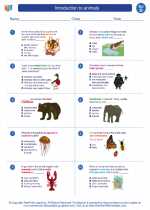 Introduction to animals
Introduction to animals  Worksheet/Answer key
Worksheet/Answer key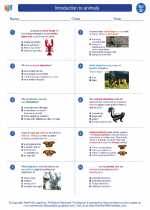 Introduction to animals
Introduction to animals  Worksheet/Answer key
Worksheet/Answer key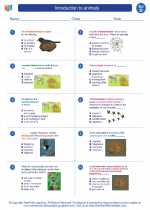 Introduction to animals
Introduction to animals  Vocabulary/Answer key
Vocabulary/Answer key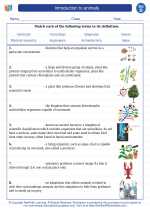 Introduction to animals
Introduction to animals  Vocabulary/Answer key
Vocabulary/Answer key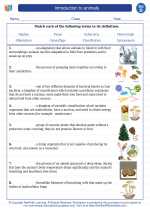 Introduction to animals
Introduction to animals  Vocabulary/Answer key
Vocabulary/Answer key Introduction to animals
Introduction to animals  Vocabulary/Answer key
Vocabulary/Answer key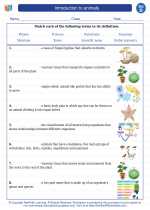 Introduction to animals
Introduction to animals 

 Worksheet/Answer key
Worksheet/Answer key
 Worksheet/Answer key
Worksheet/Answer key
 Worksheet/Answer key
Worksheet/Answer key
 Vocabulary/Answer key
Vocabulary/Answer key
 Vocabulary/Answer key
Vocabulary/Answer key
 Vocabulary/Answer key
Vocabulary/Answer key
 Vocabulary/Answer key
Vocabulary/Answer key

The resources above cover the following skills:
Concepts of Life Science (SC1, SC2, SC3)
The student demonstrates an understanding of how science explains changes in life forms over time, including genetics, heredity, the process of natural selection and biological evolution by showing the relationship between physical characteristics of Alaskan organisms and the environment in which they live.